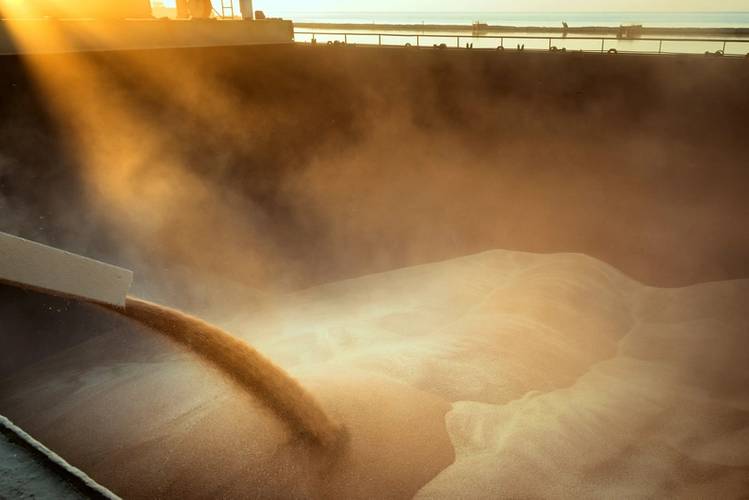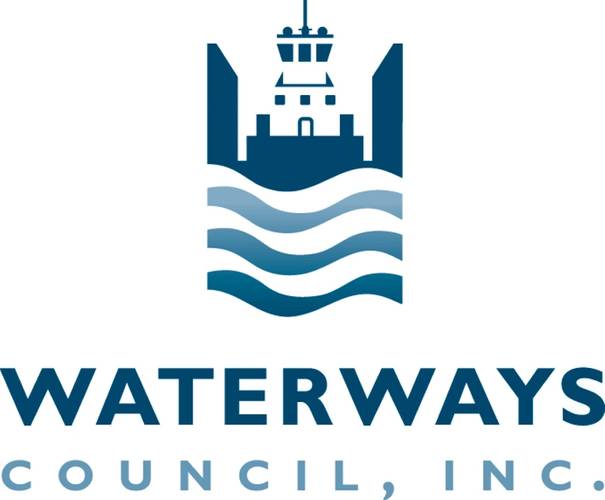OP/ED: Farm Facts
USDA Study Underscores Value of Inland Waterways to U.S. Agriculture.
On August 28, U.S. Secretary of Agriculture Sonny Perdue and Assistant Secretary of the Army (ASA) for Civil Works R.D. James toured Mel Price Locks and Dam in Alton, Illinois, and held a Town Hall Meeting to discuss the importance of the waterways, agriculture and the U.S. economy. At the event, Secretary Perdue briefed agricultural and waterways stakeholders on a newly released study – Importance of Inland Waterways to U.S. Agriculture – from the U.S. Department of Agriculture (USDA) highlighting the impact of inland waterways systems to agriculture in the United States and the economic impact of investing in modernizing the nation’s inland system.
At the event, Secretary Perdue, a farmer himself, said, “Logistics and transportation are some of the most important aspects to farming and America’s superior inland waterways are critical to our overall agricultural system. Water transport is the most efficient, cost-effective transportation for our producers, and our waterways keep the American exporter the most competitive in the world. President Trump has made it a priority to revitalize our nation’s infrastructure and invest in our rural communities, and his goal to reestablish America’s economic prowess on the global stage can be furthered by rebuilding our waterways to support agriculture exports. We must continue to invest in modernizing our lock and dam infrastructure that flows through the heartland of agricultural production.”
ASA James added, “This Nation’s inland waterways are vital to our economy as they provide cost-effective transportation to producers and manufacturers throughout system while reducing pressure on our overburdened interstate highways. Our inland waterway system is the largest in the world and provides jobs that strengthen American communities and the nation as a whole. This invaluable system is aging; the Corps of Engineers diligently addresses the systems maintenance needs with resources provided to ensure efficient shipment of goods, while continuing to expand partnerships and build new alliances in order to maintain America’s competitive edge in global markets.”
Produced for USDA’s Agricultural Marketing Service, the study utilized economic modeling to forecast impact to farmers and to U.S. competitiveness of varying levels of investment in our inland waterways system over a 10- and 25-year period.
Also, efficiencies gained by dredging the lower Mississippi River from Baton Rouge through New Orleans and the Southwest Pass into the Gulf of Mexico would alone result in a 12- to 13-cent-per-bushel improvement on the price of corn and soybeans.
At the Town Hall meeting, Waterways Council, Inc. (WCI) commended Secretary Perdue and USDA for this study that quantifies cost-savings and competitive advantages that would accrue from long-delayed improvements to inland waterways locks and dams on the Upper Mississippi and Illinois River system. WCI later issued a press release with the National Grain and Feed Association (NGFA) and highlighted other parts of the study:
- U.S. farmers enjoy a competitive advantage in global export markets in large part because of the nation’s robust, resilient transportation and infrastructure network that moves corn and soybeans, the nation’s highest yielding crops.
- Because of its efficiencies and lower costs, the inland waterways save between $7-$9 billion annually over the cost of shipping by other modes.
Every dollar of waterways activity output results in $1.89 in additional U.S. economic activity directly related to the waterways. - Compared to the status quo, increasing inland waterways investment by $6.3 billion over 10 years (through 2029) and $400 million/year through 2045 cumulatively would grow the waterways’ contribution to U.S. GDP by 20 percent (to $64 billion) and increase waterways-related employment by 19 percent – to 472,000 jobs. The study says this option would more than offset the cost of completing all proposed projects, and increase market value of U.S. corn and soybeans by $39 billion. Conversely, reduced investment would decrease market value of those commodities by $58 billion.
- The inland waterways’ infrastructure is aging and needs major rehabilitation and construction to restore its full capability, forestall major disruptions and provide opportunities for growth. Most Upper Mississippi and Illinois River System locks have far exceeded their projected 50-year lifespan. Delays can cost operators and shippers more than $44 million annually. For corn, Mississippi River delays could have up to a $0.24 per bushel negative impact.
- While the U.S. currently has a $5.35 per metric ton advantage over Brazil when shipping soybeans on the inland waterways (Davenport, Iowa, to Shanghai, China), aging U.S. waterways infrastructure will increase the price to the end-user, lower demand for U.S. grains and soybeans, and make them less competitive in global markets.
USDA’s study underscores the inland waterways as a conduit to agriculture competitiveness, but WCI also believes it makes the case to expedite the Navigation and Ecosystem Sustainability Program (NESP) to modernize five locks on the Upper Mississippi River and two on the Illinois Waterway. NESP readies our Nation to be ready to capitalize on predicted grain shipments, while also improving the health of our marine ecosystems and habitats. Authorized in 2007, NESP awaits Pre-Construction Engineering and Design (PED) funds to be shovel-ready for these locks.
In the WCI-NGFA press release, NGFA President/CEO Randy Gordon said, “We appreciate the leadership of Secretary Perdue and USDA in once again spotlighting the importance of the U.S. inland waterways transportation system to U.S. agriculture’s global competitiveness and farmers’ bottom lines. Very importantly, this study quantifies the significant cost of further delays in rebuilding America’s inland waterway infrastructure, and it’s not a pretty picture. Foreign competition from countries like Brazil is only increasing given current trade disruptions, and China is investing aggressively in South America’s transportation infrastructure to the United States’ detriment. The United States simply can’t afford to lag behind any longer. This study is a wake-up call to the White House Office of Management and Budget and Congress to make the PED funding for NESP available this year, and to ensure growing investments are continued and expedited in the tremendous natural resource that America’s inland waterways represent.”
NESP NOW!
Find the report HERE:
This article first appeared in the October 2019 print edition of MarineNews magazine.
















